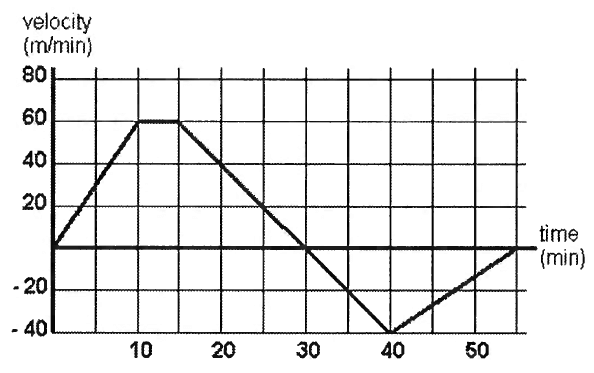ROUNDING TO SIGNIFICANT FIGURES
When we do mathematical calculations or find measurements which require rounding off, a decision has to be made as to how precise that answer must be.
Example 1 :
Three different people measure the length of a room. The measurements given by them are 7.8 meters, 8 meters and 7.76 meters. Which is the most appropriate measurement ?
Solution :
This can be determined by the number of “significant digits”, also called “significant figures”, in the measurement.
7.8 meters has 2 significant figures
8 meters has 1 significant figure
7.76 meters has 3 significant figures
The measurement of 7.76 meters is more precise than 7.8 meters or 8 meters because it has more significant digits.
Rules for Determining the Number of Significant Figures in a Number
Rule 1 :
All non-zero digits (1, 2, 3, 4, 5, 6, 7, 8 and 9) are significant figures.
5.6 ----> 2 significant figures
7.86 ----> 3 significant figures
4 ----> 1 significant figure
Rule 2 :
Zeroes between non-zero digits are significant figures.
3057 ----> 4 significant figures
7.0002 ----> 5 significant figures
Rule 3 :
Any zeroes to the left of the first non-zero digit are NOT significant figures (being called leading zeroes).
0.006 ----> 1 significant figure
0.072 ----> 2 significant figures
Rule 4 :
Any zeroes at the end of a number that contains a decimal point ARE significant figures (being called trailing zeroes).
5.0 ----> 2 significant figures
0.0360 ----> 3 significant figures
200. ----> 3 significant figures
200.0 ----> 4 significant figures
Rule 5 :
Zeroes at the end of a whole number that does not contain a decimal point are not significant figures.
500 ----> 1 significant figure
605,000 ----> 3 significant figures
Rule 6 :
When a number is in scientific notation, don't consider the exponent of ten and use the rules explained above on the decimal number only.
2.6 x 105 ----> 2 significant figures
2.06 x 10-6 ----> 3 significant figures
2.060 x 107 ----> 4 significant figures
Rounding to Significant Figures
To round a number to 1 significant figure, look at the digit after the first significant figure. If it is 5 or more, increase the previous digit by 1. If it is 4 or less, keep the previous digit same.
If you want to round a number to 2 significant figures, look at the digit after the second significant figure, and do the same process as explained above.
And the same can be done to round a number to 3 or 4 or 5..... significant figures.
Example 2 :
Round 6.7845 to 3 significant figures.
Solution :
All the digits in 6.7845 are non-zero digits.
6.7845 has 5 significant figures
If you want to round 6.7845 to 3 significant figures, look at the digit after the third significant figure.
In 6.7845, the digit after the third significant figure is 4.
6.7845
Since the digit after the third significant figure is 4, keep the previous digit 8 same.
6.7845 to 3 significant figures = 6.78
Example 3 :
Round 0.0360578 to 4 significant figures.
Solution :
0.0360578 has 6 significant figures
If you want to round 0.0360578 to 4 significant figures, look at the digit after the fourth significant figure.
In 0.0360578, the digit after the fourth significant figure is 7.
0.0360578
Since the digit after the fourth significant figure is 7, increase the previous digit 5 by 1.
0.0360578 to 4 significant figures = 0.03606
Multiplication and Division
To determine the number of significant figures in the final answer of a multiplication or division, first do the calculation. Then, round the answer to the same number of significant figures that is in the number with the least number of significant figures in the calculation.
Example 4 :
Using the approximation 1 kg = 2.2 pounds, convert 125 pounds to kilograms.
Solution :
125 ÷ 2.2 = 56.818181.........
125 has 3 significant figures
2.2 has 2 significant figures
We have the least number of significant figures in 2.2, that is 2 significant figures.
So the final answer will have 2 significant figures, making it no more precise than the least precise.
Final answer : 57 kilograms.
Example 5 :
Using the approximation 1 in. = 2.54 cm, convert 24.25 inches to centimeters.
Solution :
24.25 x 2.54 = 61.595
24.25 has 4 significant figures
2.54 has 3 significant figures
We have the least number of significant figures in 2.54, that is 3 significant figures.
So the final answer will have 3 significant figures.
Final answer : 61.6 centimeters.
Addition and Subtraction
When doing addition or subtraction, first do the calculation. Then round the answer to the same number of decimal places (places to the right of the decimal point) as the number in the calculation with the fewest decimal places.
Note :
It is not necessary to count the number of significant figures when doing addition or subtraction.
Example 6 :
Evaluate :
3.78 + 2.7 + 4.203
Solution :
3.78 + 2.7 + 4.203 = 10.683
3.78 has 2 decimal places.
2.7 has 1 decimal place.
4.203 has 3 decimal places.
The fewest decimal places is 1.
The final answer is 10.7.
Example 7 :
Evaluate :
2.56 - 1.235
Solution :
2.56 - 1.235 = 1.325
2.56 has 2 decimal places.
1.325 has 3 decimal places.
The fewest decimal places is 2.
The final answer is 1.33.
Kindly mail your feedback to v4formath@gmail.com
We always appreciate your feedback.
©All rights reserved. onlinemath4all.com
Recent Articles
-
Digital SAT Math Problems and Solutions (Part - 150)
Apr 25, 25 11:46 AM
Digital SAT Math Problems and Solutions (Part - 150) -
AP Calculus AB Problems with Solutions (Part - 19)
Apr 24, 25 11:10 PM
AP Calculus AB Problems with Solutions (Part - 19) -
AP Calculus AB Problems with Solutions (Part - 18)
Apr 24, 25 11:06 PM
AP Calculus AB Problems with Solutions (Part - 18)
